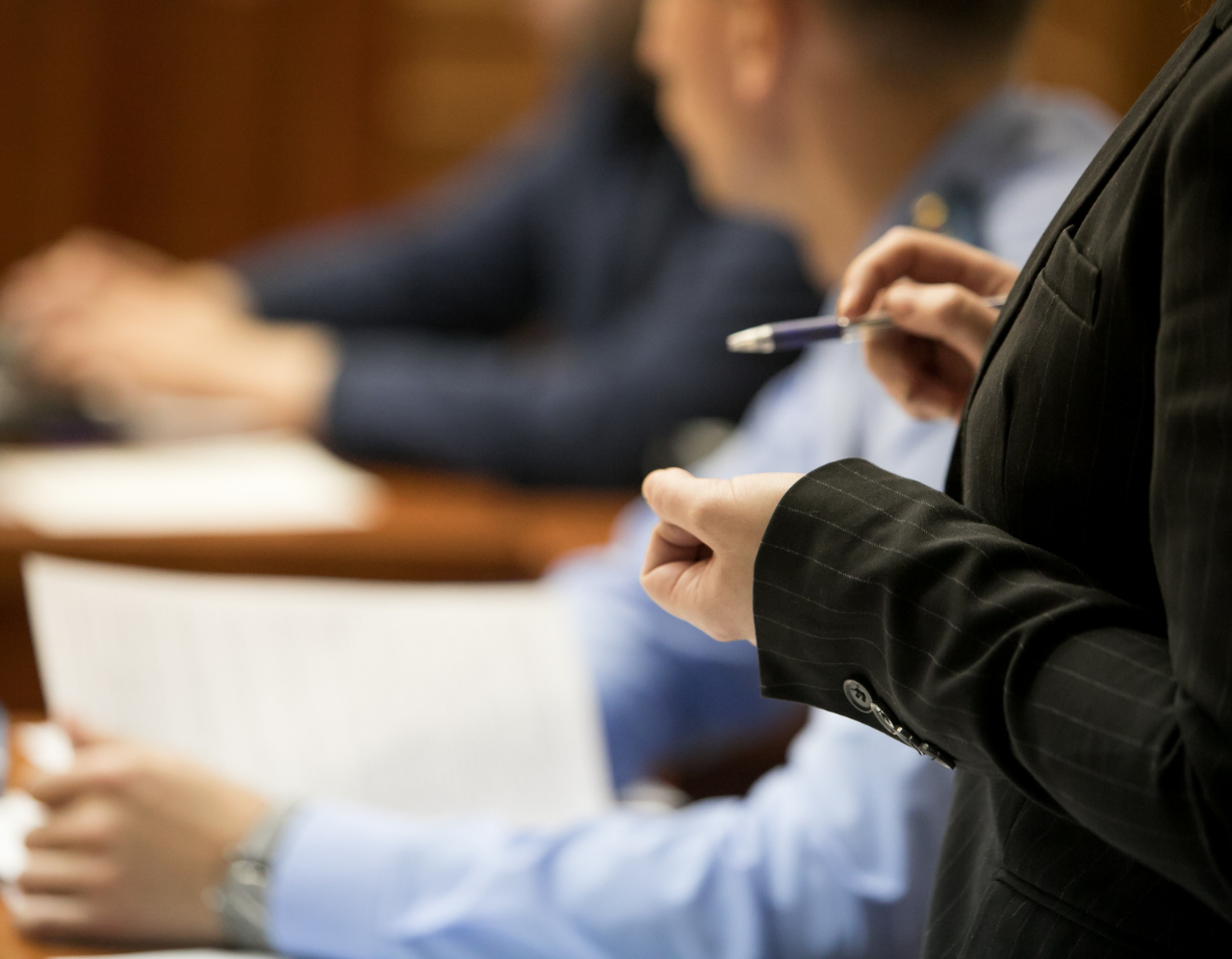From Principle to Courtroom: Steps to Develop Powerful and Convincing Trial Presentations
From Principle to Courtroom: Steps to Develop Powerful and Convincing Trial Presentations
Blog Article
Navigating the Intricacies of Trial Presentations: Tips for Seamless Distribution and Compelling Arguments
In the world of lawful procedures, the art of test discussion stands as a critical determinant of success. The intricacies fundamental in test discussions call for a fragile equilibrium of ability, strategy, and finesse.

Comprehending Test Goals
To properly navigate a trial, it is crucial to have a clear understanding of the purposes that need to be attained. Before entering the court, legal teams should define their objectives and preferred results. These goals act as directing principles throughout the test, forming methods and influencing decision-making processes.
Recognizing test purposes entails a comprehensive analysis of the situation, lawful precedents, and the client's finest interests. Trial Presentations. It requires a careful assessment of the facts, determining crucial problems, and anticipating prospective challenges. By setting certain and quantifiable objectives, lawyers can customize their arguments and presentations to line up with the preferred outcomes
Moreover, a clear grasp of test objectives makes it possible for lawful groups to prioritize proof, witnesses, and legal debates successfully. It enables for the development of a systematic story that resonates with the judge and jury, strengthening the overall case discussion.

Organizing Evidence Efficiently
Having a clear understanding of trial purposes lays the foundation for arranging evidence properly in legal proceedings. By aligning the discussion of proof with the wanted end results of the test, lawful groups can reinforce their debates and boost their persuasiveness.
Another trick element in organizing evidence successfully is establishing a sensible circulation. Offering proof in a consecutive and meaningful fashion can aid construct a compelling narrative that supports the legal arguments being made. In addition, making use of aesthetic aids such as charts, graphes, or timelines can additionally enhance the organization of proof and aid in clarifying complex connections or sequences of events.
Furthermore, guaranteeing that all evidence offered is appropriate and permissible to the case is essential. Unnecessary or inadmissible evidence can detract from the toughness of the debate and potentially damage the integrity of the here and now party. A precise testimonial and choice procedure ought to be carried out to include only the most legitimately audio and impactful evidence in the test discussion.
Crafting Influential Narratives
Crafting engaging stories plays a pivotal role in offering influential disagreements throughout lawful proceedings. A well-crafted narrative has the power to captivate the audience, evoke feelings, and inevitably guide the choice in favor of today event. When constructing a story for a trial discussion, it is necessary to establish a clear storyline click now that highlights crucial factors and attaches them in a systematic way. Begin by outlining the truths of the instance in a compelling way, guaranteeing that the series of occasions is easy to adhere to. Present personalities effectively, giving history info that assists the target market understand their actions and inspirations. Additionally, incorporating vibrant descriptions and appealing language can bring the narrative to life, making it much more unforgettable for the court and court. By weaving together proof, testament, and lawful arguments into a convincing and cohesive narrative, lawyers can properly support for their customers and increase the likelihood of a beneficial outcome in the courtroom.
Mastering Aesthetic Help
Effective use visual help is key to improving the impact and clearness of test discussions. Visual help, when utilized strategically, have the power to simplify intricate details, reinforce key points, and leave a long lasting impact on the discretionary. To understand visual aids in test discussions, it is crucial to ensure that they are clear, concise, and pertinent to the disagreements being made.
When integrating aesthetic help, such as graphes, timelines, pictures, or charts, right into a test discussion, it is important to maintain them aesthetically appealing yet professional. The visuals must enhance the spoken arguments, giving an aesthetic representation of the details being gone over without frustrating the target market with unnecessary information.
Moreover, exercising with the visual aids ahead of time is vital to make sure a seamless delivery throughout the test. Familiarizing oneself with the material, shifts, and timings of each visual aid can assist keep the flow of the presentation and prevent technological glitches that might develop.
Supplying Impactful Closing Disagreements
A compelling closing debate serves as the conclusion of a trial discussion, enveloping the core narrative and persuading the judge and jury in the direction of a favorable choice. Begin by laying out the major arguments that support your client's placement, stressing why the evidence offered throughout the test supports your narrative.
In addition, incorporating psychological charm can further reinforce your closing argument. Eventually, a well-crafted closing disagreement need to leave a lasting impact, look at these guys compelling the judge and jury to rule in your client's favor.
Final Thought
In conclusion, mastering test presentations entails understanding purposes, organizing proof, crafting narratives, utilizing aesthetic aids, and delivering impactful closing arguments. By carrying out these approaches effectively, legal representatives can provide their case perfectly and make compelling disagreements in the court. It is critical to navigate the complexities of test special info discussions with accuracy and ability to attain success in legal proceedings.
By aligning the discussion of proof with the preferred end results of the test, legal groups can reinforce their disagreements and boost their persuasiveness (Trial Presentations). To understand visual help in trial presentations, it is essential to guarantee that they are clear, concise, and appropriate to the arguments being made
An engaging closing disagreement serves as the culmination of a trial presentation, enveloping the core story and convincing the judge and court in the direction of a desirable choice. Begin by describing the main arguments that sustain your client's position, emphasizing why the evidence presented throughout the trial supports your story.In final thought, grasping test presentations involves comprehending purposes, organizing evidence, crafting narratives, using visual help, and delivering impactful closing arguments.
Report this page